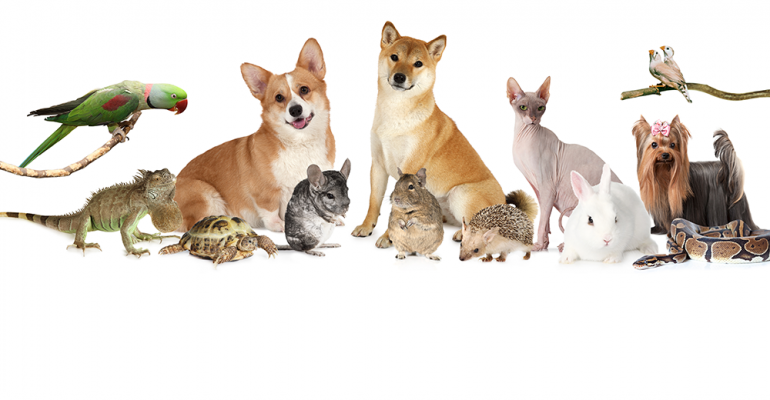Pet ownership is on the rise in the U.S., with dogs leading the way and large increases seen in the number of "less traditional" pets like poultry and lizards, according to recently released data from the American Veterinary Medical Assn. (AVMA).
The 2017-2018 edition of the Pet Ownership & Demographics Sourcebook, the most comprehensive and authoritative source of data on pet ownership and related habits of U.S. pet-owning households, found that nearly 57% of all U.S. households owned a pet at end of 2016. Approximately 38% of households nationwide owned one or more dogs — the highest estimated rate of dog ownership since AVMA began measuring it in 1982. Cats were the next most popular pet, found in 25% of U.S. households.
According to AVMA, more people than ever own specialty or exotic pets, such as fish, ferrets, rabbits, hamsters, guinea pigs, gerbils, turtles, snakes, lizards, poultry, livestock and amphibians. More than 13% of U.S. households owned a specialty or exotic pet at the end of 2016, a 25% increase from 2011, AVMA said.
The incidence of poultry owned as pets climbed 23% in five years, with 1.1% of all U.S. households now claiming poultry as pets.
AVMA said pet ownership is highest in more rural states. The 10 states that had the highest percentage of pet-owning households in 2016 were: Wyoming (72%), West Virginia (71%), Nebraska (70%), Vermont (70%), Idaho (70%), Indiana (69%), Arkansas (69%), Mississippi (65%), Oklahoma (65%) and Colorado (65%).
Pet ownership is generally lower in more urban states, AVMA said, noting that the 10 states with the lowest percentage of pet-owning households were: Rhode Island (45%), South Dakota (46%), New York (50%), New Jersey (47%), Maryland (49%), Illinois (49%), Massachusetts (49%), Connecticut (50%), Georgia (51%) and New Hampshire (52%).
The 2017-18 Pet Ownership & Demographics Sourcebook also looks at who visits a veterinarian, how frequently and under what circumstances, AVMA said. Survey findings show that dog owners have a higher propensity to obtain veterinary care than owners of other types of pet do. On average, in 2016, dog-owning veterinary clients made three visits to the veterinarian, while cat-owning veterinary clients made 2.4 visits.
"This is a fascinating look into the world of pets as well as the people and veterinarians who love and care for them," AVMA president Dr. John de Jong said. "Examining current trends in pet ownership and care provides our members with information they can use to better serve their clients and protect the health and welfare of their pets."
AVMA members may download a complimentary copy of the report's executive summary. The entire report is available for purchase from the AVMA website.
![]() This piece originally appeared on Feedstuffs, a Supermarket News sister website.
This piece originally appeared on Feedstuffs, a Supermarket News sister website.




